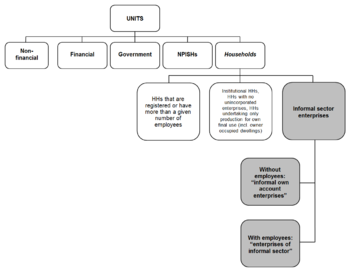Contents
Blue ocean strategy is based on the simultaneous pursuit of differentiation AND low cost. Brand and communication are taken for granted and do not represent a key for success. Kim and Maubourgne take the marketing of a value innovation as a given, assuming the marketing success will come as a matter of course. This happens when a specific type of phytoplankton reaches a high enough concentration to produce a « red tide. » Sometimes the algae also releases toxins into the water, but not all red tides are harmful. Most people’s favorite color is blue, just like most company’s logos are blue as well.
- It paved the way to CDs, Blu-ray, and other data-storage technologies.
- The blue ocean market is mostly concentrated on providing value and is created based on that.
- Due to the acquaintance with the competition rules and acceptance of the drawn boundaries, the market space gets crowded and there is a consequent reduction in growth and profitability.
- It is argued that rather than a theory, blue ocean strategy is an extremely successful attempt to brand a set of already existing concepts and frameworks with a highly « sticky » idea.
- Many of these tools are also used by Six Sigma practitioners and proposed by other management theorists.
That is why before delving into principles; we would first embrace these two tools. A company needs to invoke the most fundamental base of action- the attitudes and behavior of its people deep in the organization. Executing blue ocean strategy requires a culture of trust and commitment that motivates people to execute the agreed strategy— not to the letter, but to the spirit.
Examples Of Strategic Objectives (& How To Make Them Your Own)
Every great strategy has focus, and a company’s strategic profile, or value curve, should clearly show it. Investing across the board, companies let their business models costly. Learn the essentials of blue ocean strategy and shift created by #1 Management Thinkers in the World. On finding a new ocean, other sharks from the saturated markets aka the Red Oceans and other adjacent oceans will be lured to the new market. Thus, building strategically defensive alternatives would be a wise step.

A path-breaking strategy known as the Blue Ocean Strategy is a pacifist marketing scheme and is considered a strategic planning tool for assessing a business. It is all about devising and acquiring the uncontested market forum by spawning a new demand. The first is to build barriers to imitation, so you can enjoy your position in an untapped market for as long as possible.
Ford and Apple are two examples of leading companies that created their blue oceans by pursuing high product differentiation at a relatively low cost, which also raised the barriers for competition. They also were paradigmatic of burgeoning industries at the time that were later exemplified and emulated by others. Overall, blue ocean markets have several characteristics that innovators and entrepreneurs love. Management tools are critical for making a systematic shift to blue ocean strategy. Be mindful, adopting a blue ocean strategy isn’t a one-off policy change but requires gradual movement to shift to the new domain. When it is done in an orderly manner, it creates a big leap for the company, unlocking growth that is both profitable and rapid.
Like many colors, our response to the color blue is complex and sometimes even contradictory. Is blue the deep, brooding symbol of deep, unexplored waters? Can we interpret the cheerful hue of turquoise or the more rare brilliance of sapphire? Does blue take meaning blue ocean meaning from the uniforms of the men and women dedicated to preserving our safety? Whether calm, serene, or daunting, we are surrounded by blue in all its shades. It’s quite difficult to come up with futuristic ideas and identify colossal and untapped markets.
By taking advantage of this uncontested market place, Bloomberg L. P. has grown from its inception in 1990 to one of the largest financial news organizations in the world. The strategy aims to capture new demand, and to make competition irrelevant by introducing a product with superior features. It helps the company in make huge profits as the product can be priced a little steep because of its unique features.
At the heart of motivating the kingpins in a sustained and meaningful way is to throw a spotlight on their actions in a repeated and highly visible way. This is what referred to as fishbowl management, where kingpins’ actions and inaction are made as transparent to others as are fish in a bowl of water. Motivation Hurdle – How do you motivate key players to move fast and tenaciously to carry out a break from the status quo? That will take years, and managers don’t have that kind of time.
Blue represents introspective journeys and symbolizes wisdom and depth of understanding. But blue is also a symbol of depression and the depths of the human psyche. Blue stands for serenity, rather than passion, and it’s the color of all that’s constant and unchanging. In order to find and identify an attractive Blue Ocean, one needs to take into consideration the “Four Actions Framework” to devise the aspects of buyer value in creating a new value curve. The framework poses four key questions, namely, Raise, Reduce, Eliminate & Create.
Blue ocean strategy pitfalls to be aware of
Value innovation is the alliance of innovation with price, utility, and cost positions. It eventually creates new value/demand for consumers and thereby, expands the chances of growth potential. Blue Ocean Strategy cooperates with organizations to find uncontested markets and avoid matured and saturated markets.

Companies develop uncontested market space rather than fight over a shrinking profit pool. Major difference between blue ocean strategy and red ocean strategy is former breaks value cost trade off while conventional logic plays makes trade-off between cost and value. W. Chan Kim and Rene Mauborgne presented a new strategy named blue ocean strategy. Blue ocean strategy makes competition irrelevant but tries to create and capture a new market.
What Does the Color Blue Mean in the Bible?
The buyer utility map helps managers look at this issue from right perspective. Buyer utility map outlines all the forces companies can use to deliver exceptional utility to buyers as well as the various experiences buyers can have with an offering. This map allows managers to discover the full range of utility spaces that a product or service can potentially fill. The next step is to send a team into the field, putting managers face-to-face with customers and non-customers their products or services.
Defensive alternatives majorly consist of brand power, technological advancement, and speed of execution. Venturing into a market in the early phase comes with baggage of risk. There is a high possibility that the customers might not understand the grass root of the products and services because of the absence of a fully developed technology. It assists to move from the impediments of competing within the existing industry and cost structure and to gradually migrate towards constructive value improvement. In short, it demonstrates how to break free from the traditional strategic models and to expand profitability and demand for the industry by using the analysis.
Blue oceans are a more unoccupied market and not much known. The blue ocean market is mostly concentrated on providing value and is created based on that. In an established business industry, the businesses are competing with each other to achieve a competitive edge in the https://1investing.in/ available market share. The competition gets intense most of the time making some firms exit the market as they are not able to sustain themselves. This type of industry is known as the red ocean, due to the fierce competition with cutthroat strategies of the companies.

Ompanies need to build their blue ocean strategy in the order of buyer utility, price, cost, and adoption. To reach beyond existing demand, think noncustomers before customers; commonalities before differences; and de-segmentation before pursuing finer segmentation. This principle mitigates scale risk concerned with blue ocean idea. At the other extreme are settlers—businesses whose value curves conform to the basic shape of the industry. Settlers will not generally contribute much to a company’s future growth. Learn the key differences between red ocean and blue ocean strategy.
WHAT ARE RED OCEANS?
The strategy bags the new demand by familiarizing unique products with advanced features that stand apart from the crowd. “In business school, what you learn in the strategy 101 course is on how to compete with competitors and increase your market share,” she says. “You learn industry structure, how to analyze, compete head on, and grab more than your competitors.
Brand image conflict prevents companies from imitating a blue ocean strategy. Blocks imitation when the size of a market cannot support another player. The first question forces company to consider eliminating factors those companies in your industry have been competing over the past. Usually those factors are taken for granted even though they no longer have value or may even erode value.
From color theory to psychological effects, I want to bring information to you in an easy-to-follow and interesting way. Stick around and join me on this epic journey through colors and emotions. All in all, blue is a versatile color that can fit most situations when combined with the right colors. Each of the seven chakra colors has a symbolic meaning, and the blue chakra is no different. From logos to business attire, blue is the most commonly used color in the corporate world. Then you might want to read about the personality color blue.
When you begin your strategic planning, recognizing the difference between a red and blue ocean may not be as easy as the colors would indicate. Start by identifying what your target market needs and doesn’t currently have. Then look at what existing organizations are doing well to serve that market and determine how you can differentiate . Use the above checklist as a guide through the process and hold internal brainstorming sessions for each point. A blue ocean is an analogy to describe the wider, deeper potential to be found in unexplored market space.
